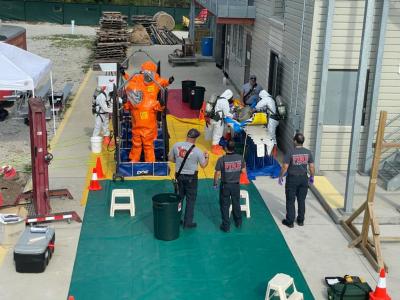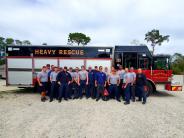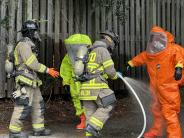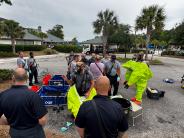Hazardous Materials Team
The BTFD has all personnel trained to the Hazmat Operations level (defensive operations) while also having 30 members across all three shifts trained to the Technician Level where personnel can directly mitigate the spill (solid, liquid, or gas) in an offensive manner (patching, plugging, or controlling the product). The BTFD is an all hazards response organization with the possibility of any call for service or 9-11 response being a Hazardous Materials incident.
Some of the different types of incidents we encounter are:
- Gas smells – natural or propane gas
- Carbon Monoxide (CO) alarms – above 35 parts per million
- Carbon Dioxide (CO2) alarms – restaurants and gas stations that have soda dispensers
- Fuel Spills – gasoline and diesel
- Fires – hydrogen cyanide gas, low oxygen, CO, other volatile chemicals
- Confined spaces – low oxygen, explosive atmospheres, hydrogen sulfide gas
- Strange odors – sewer gases such as hydrogen sulfide
- Vehicle collisions – anti-freeze, oil, anything else the vehicle may be carrying
- Acids – Muriatic acid (commonly used by pool companies for cleaning) spilled from vehicles or at job sites
The BTFD also works in conjunction with Hilton Head Island Fire-Rescue to provide Hazmat Technicians trained to the IFSAC level to be on the team and conduct monthly training and supporting the SC-HM4 team. This is a regional team that when called upon can respond statewide but primarily to the counties of Beaufort, Jasper, Colleton, and Hampton.






